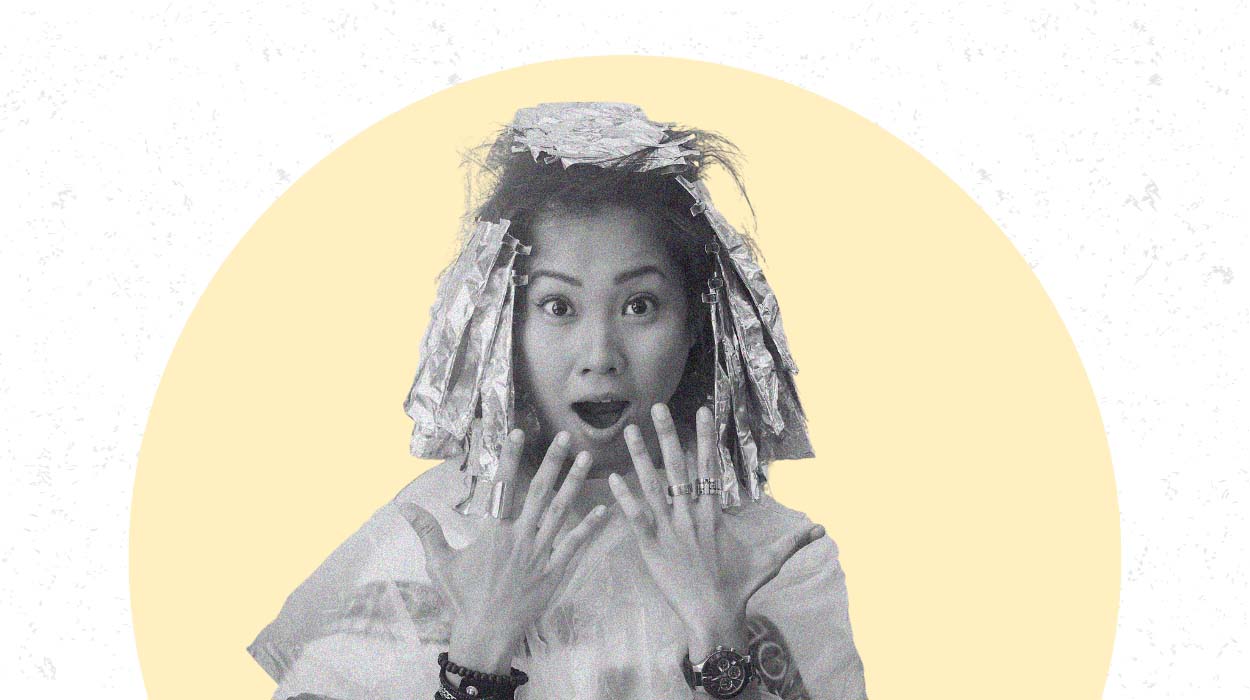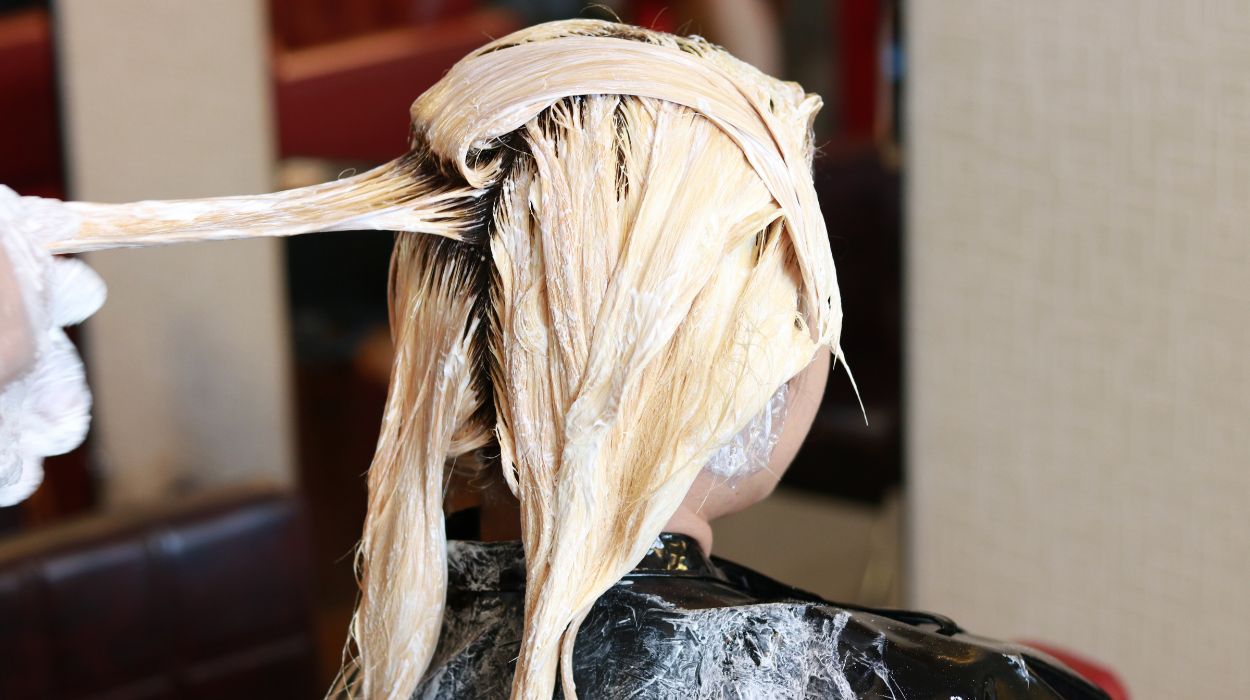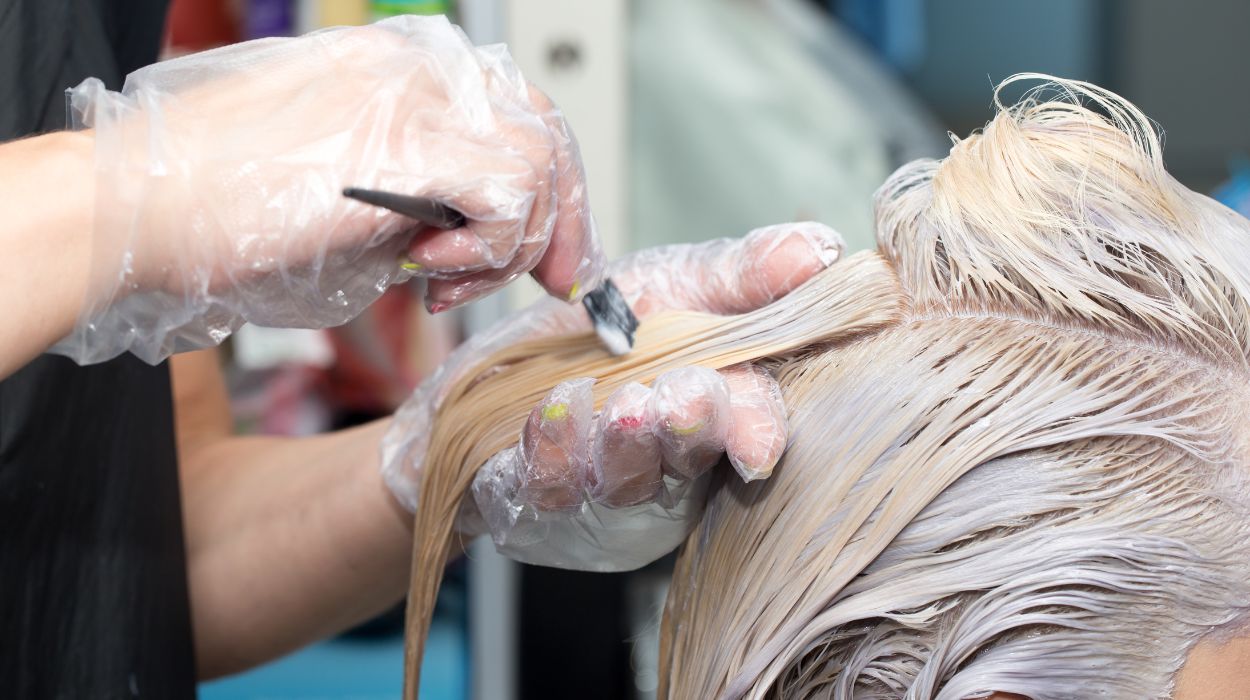 Expert's opinion
Expert's opinion
Expert's opinion
The article is a subjective view on this topic written by writers specializing in medical writing.
It may reflect on a personal journey surrounding struggles with an illness or medical condition, involve product comparisons, diet considerations, or other health-related opinions.
Although the view is entirely that of the writer, it is based on academic experiences and scientific research they have conducted; it is fact-checked by a team of degreed medical experts, and validated by sources attached to the article.
The numbers in parenthesis (1,2,3) will take you to clickable links to related scientific papers.
Can You Bleach Wet Hair? Here’s The Answer In 2024

Have you ever tried bleaching your hair? This popular trend has the potential to give you a bold and loud look. More than 50% of women[1] decide to change the color of their hair. As a method of lightening hair, bleaching decomposes chemicals that give hair its natural color.
Professional colorists use various techniques to bleach hair. They adapt their methods to suit individual preferences. This includes applying bleach to either dry or wet hair. Each of these approaches has its own advantages and considerations. Although effective, bleaching wet hair does come with some risks. It’s important to be aware of the side effects of this technique to avoid possible skin irritation and hair damage. So, can you bleach wet hair safely yourself at home? Find out everything you need to know below.
Can You Put Bleach On Wet Hair?
Yes. Professional colorists use this technique to achieve a more natural look. It can also help to reduce hair damage and retain moisture. Done incorrectly, it can cause scalp burns and uneven results. Follow product instructions and processing times. Rinse thoroughly and limit styling tools.
Can You Bleach Wet Hair?
Yes, you can, and hair colorists use this hair coloring technique often. Although effective, bleaching wet hair does come with some risks. It’s important to be aware of the side effects of this technique to avoid possible skin irritation and hair damage.
What Happens When You Bleach Wet Hair?
Do you bleach hair while wet? If so, you should know what happens when you apply this chemical to saturated hair. This approach raises concerns because of its effects on hair health and structure. When exposed to certain types of water, hair becomes weaker[2] and predisposed to breakage.
Each strand of hair has an outer layer called a cuticle. This structure protects the inner cortex, which houses proteins and melanin — a natural pigment that gives your hair its natural color. These shades vary from brown to blonde. When bleach is applied, it interacts with melanin and degrades it.
By breaking down melanin, bleach interferes with its ability to produce color. Exposing the cortex to bleach helps lighten hair shades but can also damage the cortex. It weakens the hair by causing a loss of proteins and lipids, making it prone to breakage.
Benefits Of Bleaching Hair While It’s Wet

With this in mind, can you bleach damp hair? You can, and hair colorists use this hair coloring technique often. If you’re still wondering, “Should I bleach my hair wet or dry”, explore some of the benefits of applying bleach to wet hair below. They include:
More Control
Many hairstylists report that bleaching wet hair gives them more control over the process. Wet hair is heavier and more malleable, making bunches of hair strands easier to manipulate. More control allows hairstylists to tame and target the hair strands they’re attempting to color. This can produce better results in the salon and when you want to bleach your hair at home.
Adds Definition To Ends
Instead of wetting all of your hair, targeting the ends can have a subtle but eye-catching balayage effect. After bleaching and rinsing dry hair, stylists apply bleach to the damp ends. This final touch provides a touch of definition that seamlessly integrates with the stronger tones.
Produces Natural-Looking Results
Because moisture dilutes bleach, it helps to produce a more subtle and natural look. It creates more variations in tones with less intensity. This effect mimics natural hair by resulting in more of a blended effect. While desirable, this look requires proper technique, preferably by a hairstylist.
Increases Moisture Retention
Have you ever wondered, “Should I bleach my hair wet or dry”? Bleaching dry hair offers quicker processing times. However, wet hair has a higher moisture content, which produces a softer feel shortly after bleaching.
Side Effects Of Bleaching Damp Hair
When questioning, “Can you apply bleach to wet hair?” it’s essential to consider the risks. This method offers several benefits, as well as some downsides. Before you proceed with the technique, check out these side effects:
- Uneven results: Damp hair has a higher moisture content, which can dilute bleach. While protective, this can cause uneven results. When misapplied, you may waste your bleach and need to reapply.
- Increased hair damage: Water weakens the hair, and the addition of harsh bleach further affects hair integrity. Together, these factors increase the risk of hair breakage.
- Possible skin irritation: Moisture in hair acts as a conductor, allowing bleach to reach the scalp. This can cause skin irritation[3] in some people, and these symptoms include redness, itching, and burning.
- Changes in hair porosity: Bleaching wet hair can increase hair porosity and compromise the protective cuticle. Higher porosity makes hair more prone to frizz. Over time, this can lead to drier, duller, more brittle hair. These factors make hair more difficult to manage.
Should You Wash And Dry Your Hair Before Bleaching?
Generally, hair colorists recommend not washing and drying hair before bleaching. Washing removes protective oils that collect on the hair and scalp. Most hair stylists will simply spritz the hair so it is damp before they bleach it. However, applying bleach to freshly washed hair has some advantages; it lightens faster, provides a more subtle color change, and highlights the ends.
How To Bleach Hair Safely

To carry out the bleaching process safely, you must remember some things. Some people report reactions[3] after working with bleach, and these side effects include itching and redness. Processing times are also important to minimize the risk of damage. Below, you’ll learn everything you need to know to bleach wet hair safely:
- Follow instructions on the product packaging: Familiarize yourself with specific product instructions before applying bleach. These will explain key details, including mixing ratios, precautions, and other additional steps. Read carefully, as the instructions vary from product to product.
- Perform a strand test: Before bleaching your hair, it’s essential to perform a strand test. Take a small section of hair and apply the bleach according to the instructions. Next, take some time to see how the strands react. A strand test will help you see the outcome of applying the product, including the level of lightning achieved. It’ll also allow you to look for any reactions.
- Use high-quality bleach: Choosing the right bleach can greatly influence the outcome. Low-quality and cheap products are more likely to damage hair. Professional-grade bleaches are formulated to reduce damage, and they contain conditioning agents that help to protect hair shafts. High-quality hair products also provide more predictable results and might reduce adverse reactions, including hair loss.
- Protect your skin: Bleach can cause mild skin irritation in some people. You can take measures against this using a couple of simple techniques. Applying a layer of petroleum jelly to your scalp before bleaching will help to protect it. You should also consider wearing gloves to protect your hands from possible irritation.
- Consider processing times: How long to leave bleach on wet hair? You should see this information in the product instructions. Typical processing times range from 20–45 minutes. Leaving in bleach for longer than recommended increases the risk of hair damage and scalp irritation. Adhering to the recommended processing times is crucial for achieving the desired results.
- Rinse thoroughly: After the recommended processing time, rinse your hair thoroughly. Wash your hair with cool water until all traces of bleach are removed. Rinsing stops the bleaching process and helps reduce irritation and hair shaft damage. Thorough rinsing also ensures that no residual bleach remains behind, which could cause ongoing damage if left in place.
- Limit heat: Blow dry your hair using the cool setting on your hairdryer. Avoid using heated styling tools, such as curl irons or straighteners, on your newly bleached hair for about two weeks after the bleaching. Heat can cause structural change[4] in hair, and it does so by further affecting hair structure and moisture balance.
The Bottom Line
Bleaching wet hair poses several side effects, including possible hair damage and scalp irritation. However, when applied properly, bleaching wet hair can provide a more natural look.
If you decide to bleach wet hair yourself, follow product instructions. If you’re not confident, hire a professional colorist to bleach wet hair.
+ 4 sources
Health Canal avoids using tertiary references. We have strict sourcing guidelines and rely on peer-reviewed studies, academic researches from medical associations and institutions. To ensure the accuracy of articles in Health Canal, you can read more about the editorial process here
- Patel, D., Narayana, S. and Krishnaswamy, B. (2013). Trends in use of hair Dye: A cross-sectional study. [online] 5(3), pp.140–140. doi:https://doi.org/10.4103/0974-7753.125610.
- Muhammad Luqman, Ramzan, M., Javaid, U., Ali, R., Shoaib, M. and Muhammad Luqman (2018). To evaluate and compare changes in baseline strength of hairs after treating them with deionized water and hard water and its role in hair breakage. [online] doi:https://doi.org/10.4103/ijt.ijt_115_16.
- Aneta Kleniewska, Wiszniewska, M., Patrycja Krawczyk-Szulc, Nowakowska-Świrta, E. and Jolanta Walusiak-Skorupa (2016). Anaphylactic reaction in a hairdresser due to sensitization to persulphates. [online] 66(7), pp.584–585. doi:https://doi.org/10.1093/occmed/kqw037.
- Yu, Y., Yang, W., Wang, B. and Gao, X. (2017). Structure and mechanical behavior of human hair. [online] 73, pp.152–163. doi:https://doi.org/10.1016/j.msec.2016.12.008.



